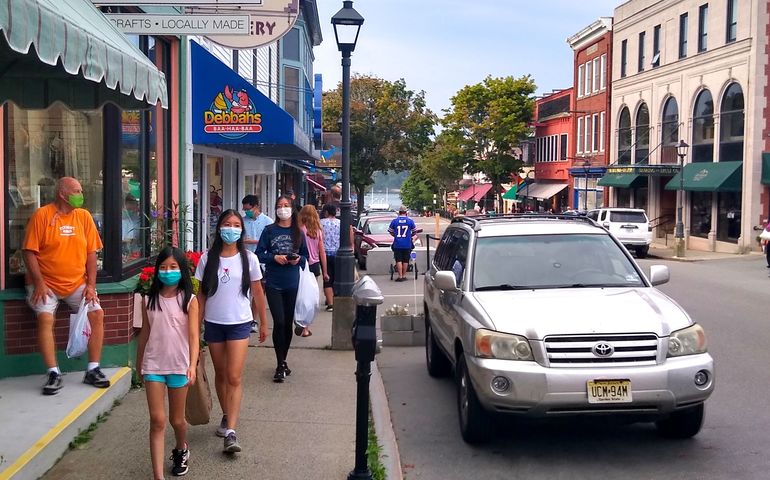Bar Harbor considers cap on short-term rentals
 Photo / Ezra Schreiber-MacQuaid
The town of Bar Harbor is tackling the issue of short-term vacation rentals. Visitors flocked there in July and August, after a slow start to the season.
Photo / Ezra Schreiber-MacQuaid
The town of Bar Harbor is tackling the issue of short-term vacation rentals. Visitors flocked there in July and August, after a slow start to the season.
The town of Bar Harbor is looking at curtailing the conversion of year-round housing to vacation rental units, with a goal to ultimately cap the number of vacation rentals on a percentage basis.
While vacation rentals have spiked in recent years, Bar Harbor grapples with a shortage of affordable, year-round housing.
Overall, year-round housing numbers are going down and seasonal housing is going up. According to U.S. Census data from 2010-17, Bar Harbor’s population rose 2.3%, but the number of affordable housing units declined by 1%.
Sixty applications for vacation rental licenses are pending now. If they are approved, the town will have more than 500 vacation rentals.
About 10% of Bar Harbor’s housing stock now consists of vacation rentals. A proposal is underway to reduce that percentage to 7.5% through attrition, a reduction that could take years to accomplish.
At a workshop last week held by the Town Council and Planning Board, members of both bodies agreed it is important to protect property owners who have already invested in the vacation rental market. But they also want to prevent residential neighborhoods from becoming lodging zones.
“Bar Harbor has a situation where we’re losing housing to vacation rentals,” said Councilor Joe Minutolo. ”I’m hearing from people who really miss having a neighborhood. They have a revolving door of neighbors.”
Last October, the town’s planning department created a housing policy framework that defines a goal of supporting Bar Harbor’s year-round community “by having adequate and affordable workforce housing for residents who work in town, for families hoping to raise their children here, for seniors hoping to stay in the community as they age, and for businesses looking for a stable workforce and housing base needed to expand the town’s year-round economy.”
The framework identifies a number of strategies to accomplish that goal. They include:
• Curtail the conversion of year-round housing to short-term rentals.
• Provide affordable seasonal employee housing on land served by water and sewer and in close proximity to places of employment.
• Identify vacant, underused and town-owned parcels that could be used for housing development.
• Work with local organizations, including MDI Housing Authority, Island Housing Trust and Maine Coast Heritage Trust, to develop housing that meets the needs of the community.
• Create partnerships with large employers, including Jackson Laboratory, Mount Desert Island Hospital and College of the Atlantic, to identify ways to work together to create housing.
• Secure the transfer of a 40-acre parcel from the National Park Service to the town for the purpose of year-round affordable workforce housing. The parcel, in the village of Town Hill was originally earmarked by the National Park Service for an island-wide transfer station but was never used that way.
At the workshop, the board and the council debated whether to retain the current 10% level of vacation rentals as its cap, or to set a 7.5% cap.
The 7.5% cap could be attained either through attrition, as existing vacation-rental owners decide to leave the business, or by increasing the number of year-round housing units through the strategies outlined in the housing policy framework, noted Councilor Gary Friedmann.
Town officials have previously noted that local employers struggle to attract and retain workers due to the lack of affordable housing. The surge of vacation rentals is constricting the supply of year-round rental housing and inflating the overall cost of housing.
The workshop was part of a process to draft amendments to the land use ordinance for potential inclusion on the November 2020 municipal ballot.
Mainebiz web partners
No new housing without full environmental impact statements.
The new push for housing is ruining real opportunities to mitigate the effects of climate change since large tracts of old growth forest are being replaced by pavement and other impervious surfaces. There is a movement to require environmental impact statements that replace trees and forests with new ones. The damage to conversion of CO2 by trees MUST be measured before any new housing is built.










3 Comments